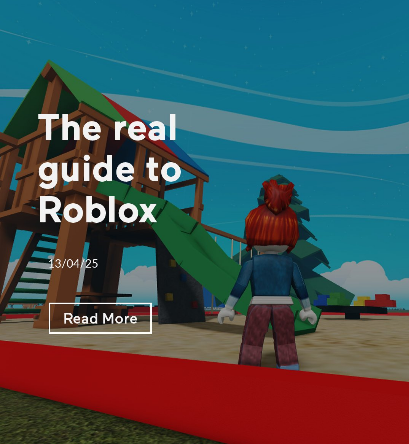There’s a popular platform where a wrong click takes you to a bedroom with BDSM themes, voices mimicking sex acts echo over your headset and people you’ve never met ask for your contact details to send private messages and pictures.
Does this sound familiar?
You’ve likely heard of it – perhaps your own children use it. This is Roblox.
An online gaming and social platform featuring blocky, cartoonish avatars, designed for children and hugely popular among them, with access starting as young as age 5.
We were aware of the popularity of Roblox from young participants across many of our research projects, prompting us to explore it ourselves. Within minutes, we witnessed avatars mimicking sex acts and conversations being steered off-platform.
Since then, we’ve invested hours testing the platform—examining what users of all ages can access and evaluating the safety features and age-verification measures meant to protect children.
The big problems with Roblox
Adults and children can chat freely, with no supervision
Roblox allows children and adults to mix in ways most parents wouldn’t expect. To test this, we created two avatars: one posing as a 9-year-old, the other as a 42-year-old. Both could join the same games, invite each other to play, and communicate via public chat.
When we adjusted the younger avatar to age 13, the options expanded: voice chat and private messaging became available. All it took was a phone number – no age verification, no parental consent required.
There are spaces, accessible to under 13-year-olds, full of adult themes
The platform hosts ‘experiences’, surprisingly easy to stumble into, which are full of content most would call unfit for children.
Our 10-year-old avatar was able to enter experiences like “Boys and Girls Club Roleplay”, with had a “Mild” maturity rating. There, cartoonish figures in BDSM-style outfits mimicked sex acts in virtual bedrooms, fully accessible to our underage account.
The age verification measures that exist are easily circumventable
Age verification is supposed to limit the features and spaces accessible to users of different games. But the reality is, anyone, adults or children can lie about their age.
Roblox lets anyone over 5-years-old create an account but relies on users truthfully self-reporting their age when they sign up. Users can input any age from 5 and above, regardless of their age, and gain access to the platform.
Safety controls don’t eliminate the risks
Even when a child under 13 enters their real age, they’re still exposed to public chats where unknown adults can contact them. Filters block explicit sharing of contact details, but workarounds, like writing ‘S nap’ instead of “Snapchat”, are common. And children can still be exposed to inappropriate themes, outfits, environments, and behaviours, without talking to anyone at all.
So what can parents do?
Parents have some control: you can create your own Roblox account, enable parental verification, and link it to your child’s account to monitor or restrict activity, now including the ability to remove users from your child’s friends list and block them from accessing certain games or experiences.
However, parental verification is optional, not obvious for busy or less tech-savvy parents, and easily skipped over by a child rushing through the frictionless sign-up process.
Even if you implement all of the safety controls available to parents, your child can still access public forums, and with 6 million experiences it won’t be possible to vet them all to prevent your child stumbling into games or spaces with adult themes.
The risks remain significant.
Roblox markets itself as a child-friendly space, but our exploration reveals a platform where safety measures are flimsy, and adult-child interactions are far too easy.
Read our guide to Roblox
We have created a guide to the risks present on Roblox: Click here to read
This has been covered in The Guardian

